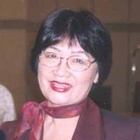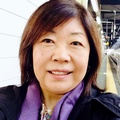Ser Nikkei en las América es llevar dos culturas en su haber, por un lado el ser japonés que se recibe a través de una educación y la disciplina inculcada por los padres japoneses desde el primer aliento de vida del niño. Sus primeros pasos en la vida es a la manera japonesa, en donde cimienta las bases que han de perdurar a través de los tiempos. De ahí el modo de pensar y actuar, la actitud de cierta manera diferenciada de los nikkei. Según Chie Nakane, existe una configuración homogénea de la sociedad japonesa que se observa en todos los estratos y manifestaciones y que trasciende a través de la historia con una cultura uniforme, vertical y hereditaria. Cuanto más se adopta y practica esa cultura, se es más virtuoso y apreciable a los ojos de los japoneses.
Por otro lado, el entorno social en que se desarrolla el nikkei es el ámbito local y se hace necesario adoptar maneras y expresiones de esa cultura local, el nikkei no puede desarrollarse de manera aislada. Como dijo John Done “ningún hombre es una isla”, no es posible vivir en circunstancias ajenas a los acontecimientos, a las variedades e innovaciones de la vida que depara el entorno.
Los nikkei en la actualidad, concientes de estos dos paradigmas, tratan y manejan con naturalidad y habilidad estas dos condiciones que se hibridan y que, por cierto, dependiendo de la situación se vuelven hostiles entre sí algunas veces y en otras amistosas y respetuosas. Esta hibridación cultural, que para algunos “ni es chicha ni limonada” y para otros es “genna nihonjin” (japonés raro), puede considerarse como positiva por el sólo hecho de insertar en los individuos dos culturas; es decir, dos mundos que difieren en todos sus aspectos, pero que se conjugan en un ser. Llegar a comprender su esencia, entender sus manifestaciones y apreciar esas dos expresiones de por sí es un logro.
Por otra parte, el Nikkei actual se relaciona con personas de otras comunidades similares del exterior, lo que se da con más facilidad y de manera mucho más cordial y amistosa. Las oportunidades de establecer relaciones, discutir, consensuar ideas y proposiciones con otros nikkei del continente se facilitan porque todos son portadores de dos mundos que conviven. Esto ocurre en los encuentros de confraternización, como las Convenciones Panamericanas Nikkei, los encuentros deportivos y de capacitación de jóvenes nikkei, las reuniones del ámbito financiero, comercial y de las cooperativas nikkei.
Entre todos los atributos virtuosos del comportamiento al estilo japonés, que se practicaron y que siguen de alguna manera en uso, se podría poner sobre el tapete el concepto de enryo, que es una actitud muy peculiar del pueblo japonés y que puede definirse como reserva, modestia, recato, vacilación, rehusarse a o abstenerse de algo por discreción. Es considerada como una de las virtudes fundamentales del pueblo japonés, que se viene practicando desde tiempos inmemoriales y que se ha formado como un ethos de la cultura japonesa. Para un occidental esta forma de ser muy peculiar del japonés es también muy difícil de entender y de comprender, tal vez su aplicabilidad en un ambiente diferente no es lo más recomendable.
El predominio sobre los demás, sin discernir sobre la verdadera situación de los otros y sus circunstancias, en la mayoría de los casos es considerado perjudicial, no es bien vista entre los japoneses. Ellos, dentro de una sociedad relativamente cerrada, buscan la igualdad y equidad entre las personas integrantes de una comunidad, de ahí el slogan: “clavo que salta, se le golpea” .
El excesivo manejo individualista de los occidentales y la conducción colectivista un tanto exagerada de los japoneses y nikkei se deberían hibridar con un 50% de cada parte, de tal manera que el egocentrismo y el altruismo se mezclen de una manera más prudencial. Curiosamente, hay un cambio de actitudes a este respecto. A los estudiantes occidentales se les enseña el trabajo en grupo, en equipo y la búsqueda del consenso, mientras a los jóvenes japoneses se les estimula a practicar más el individualismo para lograr una mayor valoración de sí mismos y buscar potenciarlos como individuos independientes.
El equilibrio y la maduración que se logre como humanidad - en que la hibridación cultural del occidente y el oriente, de la que los nikkei son los portadores inherentes, juegue un rol importante - puede convertirse en la base para el anhelado futuro y la paz en el mundo.
© 2009 Emi Kasamatsu





